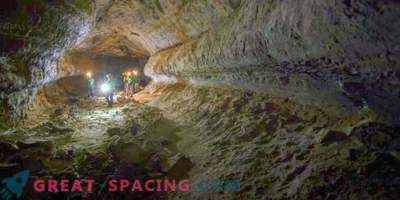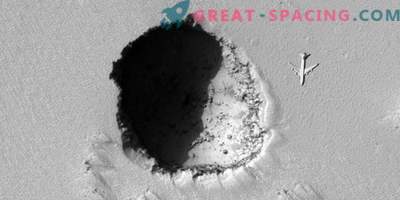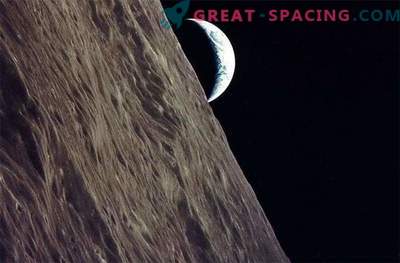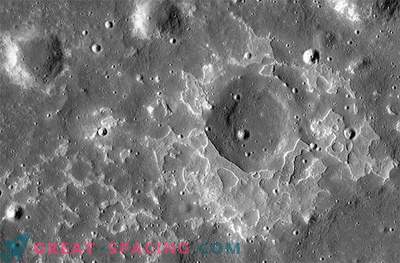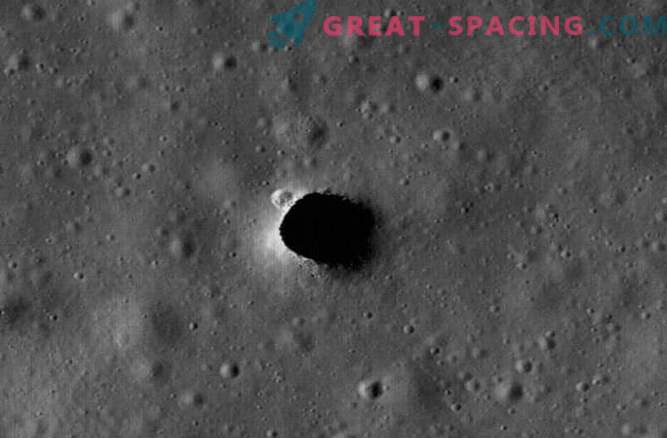
Moon caves could provide shelter for astronauts who study the Earth’s moon, researchers say.
A new analysis of the data collected by the program for studying the gravitational field and the internal structure of the moon (GRAIL), which displays the gravitational field of the moon in unprecedented detail, shows a number of lava tubes - cave-like structures that could be large enough to become shelters for astronauts.
Cosmos is a harsh place. Radiation from the Sun, cosmic galactic rays and constantly falling micrometeorites all pose a threat to researchers.
"Lava tubes provide safe conditions from all deadly environmental conditions," said research team member Rohan Suud, a graduate student at Purdue University in Indiana.
Suud presented over a dozen potential lava tubes at the 47th Lunar and Planetary Conference in Woodlands, Texas, in March.
"Lava, which flows over the entire surface of the Moon, may solidify as a protective shell. When the inner part of the shell collapses, but the outer walls remain, a lava tube is formed. The entrance to such lava tubes may be large enough for astronauts were able to explore lava tubes, "say the researchers.
Two probes of the GRAIL program studied the gravitational field of the moon from orbit from March 2012 to December 2012. Because gravitational attraction is mass-related, a hollowed-out area, such as a lava tube, has attraction slightly less than solid ground. In a new study, Suud and his colleagues studied the GRAIL data to find small differences that could indicate the presence of lava tubes on the lava plains of the Moon. First, the team first determined the lava tubes, which had access to the surface. Observations GRAIL suggest the presence of two such pipes. The study also showed that the clearance in Marius Hills is probably associated with the area under which the lava tube is located.
Then scientists searched for lava tubes that did not have access to the surface. They found at least 10 major candidates, some nearly 1 mile (1, 6 km) wide and over 60 miles (100 km) long.
"But there are still a large number of lava tubes that are too small to be detected by the GRAIL program," said Suud.
“We did find some lava tubes when the vehicles were low enough in orbit. But we could have discovered much more,” said co-author and planetary scientist Jay Melosh, also from Purdue University. "Lava tubes that were less than 0.5 miles (1 km) wide can easily avoid detection."
Large channels, known as breaks, feed large lava fields on the lunar surface. Gaps reach from 2, 5 to 3 miles (from 4 to 5 km) in width and depth to 0, 33 miles (0, 5 km), which is much more than land analogues.
"We did not find anything comparable on Earth," said Melosh.
Huge ravines suggest that the rate of lava flow on the moon was higher than that of the earth, and therefore lava tubes should be a more frequent occurrence. Weaker lunar gravity also means that large lava tubes must be more stable than on Earth, where they should have collapsed under the influence of gravity. "Analysis of the stability of lava pipes on the Moon showed that the pipes, which are 5 kilometers wide and 3 km high, are quite stable," said Melosh.
“A man has not visited the moon since the Apollo 17 mission in 1972. Lava tubes could help astronauts to be there in more comfortable conditions. But such places should be studied and checked by robotic spacecraft before people go there,” added Suud and Melosh. “We would like to additionally send a radar mission to the moon,” said Suud. "This will enable us to identify lava tubes with much greater accuracy and find lava tubes that are outside the scope of GRAIL."
Moon lava tubes also provide an excellent opportunity for scientists to learn more about other planets, for example, when astronauts go to Mars. Similar lava tubes were discovered on Mars and can be used by astronauts during long stays on the Red Planet.

